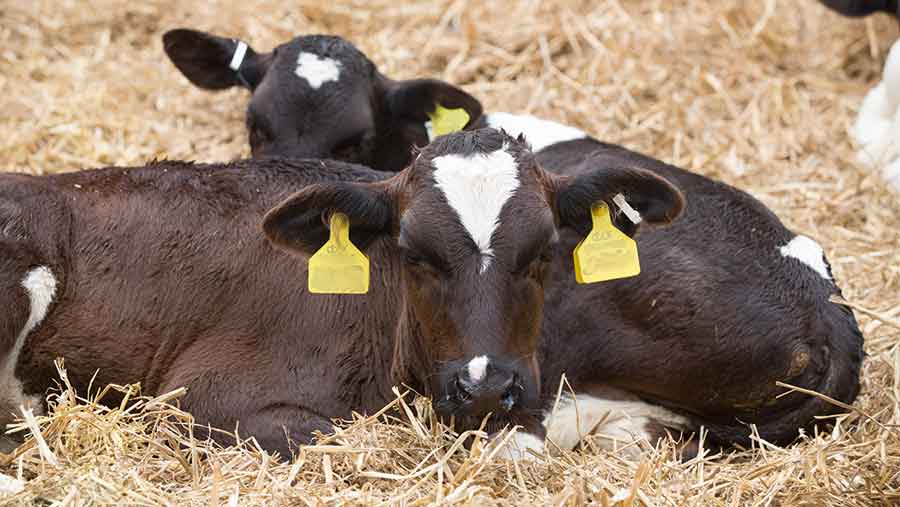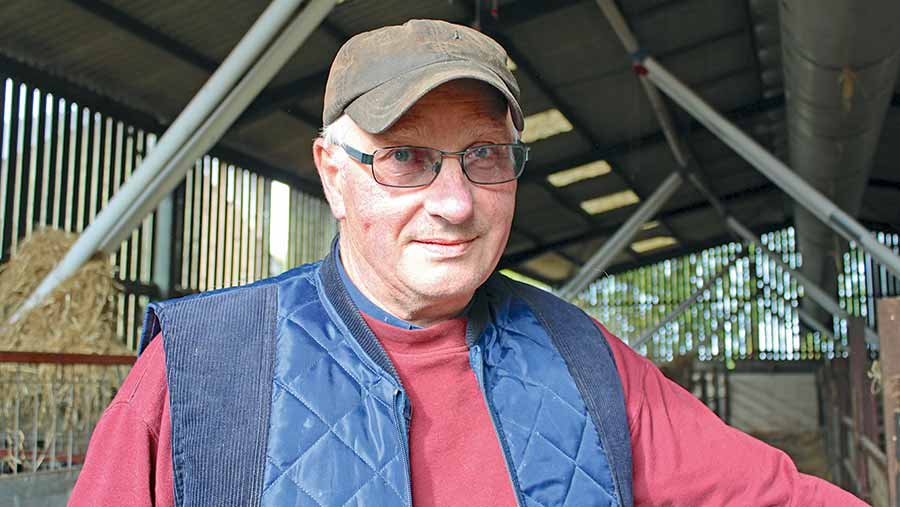Calf rearing offers extra income stream for livestock farmers
 © Tim Scrivener
© Tim Scrivener Harnessing the untapped growth potential of dairy-sired bull calves is offering growing numbers of livestock farms a much needed income stream.
Whether it’s supplementing a dairy unit’s milk cheque, or a low-investment enterprise for a young entrant, bull calves represent an often overlooked opportunity, with good quality calves costing £90 a head and fat bulls for veal slaughter averaging just under £700 at 11.5 months old.
See also: Rose veal scheme offers boost to dairy profits
But advisers warn that attention to detail and rigorous routine are essential to tap into this rapidly growing market.
Adjusting milk replacer concentrations according to temperature fluctuations and spot treating at the earliest signs of illness are examples of the diligent approach required.
Maximise monogastric stage
The pre-weaning stage represents a golden period in the calf’s life, boasting a growth rate impossible to match post weaning.
“Before the rumen develops, calves fed well can manage a feed-to-growth ratio of 2:1,” says Stephen Whelan, AHDB research and development manager. “This is sadly unachievable when the animal develops a rumen, but it shows the importance of feeding early on.
“We want the animal to double their weight from birth to weaning, which means at least 0.75kg of bodyweight gain.”
Achieving 1kg/day dairy growth
Former dairy farmers Tim Walwin and wife Sandy are achieving daily weight gains of 1kg and above across all breeds, from Holsteins to Angus-crosses. They rear about 2,400 dairy calves a year for veal near Frome, Somerset.
Calves come in at two to three weeks old and are shipped off for finishing at 14-15 weeks old weighing 130-160kg, depending on the customer.

Tim Walwin
To maximise labour resources, Mr Walwin opts to trough-feed milk, giving calves three litres once a day with 140g of powder.
“I batch them on size, striving for pens of calves of equal size to reduce animals being outcompeted,” he explains. “Feeding on a trough has never been as issue in terms of calves being greedy.
Calf-rearing protocol at Tim Walwin’s farm
- Capacity for 700 dairy-sired calves. Pens turned every 15 weeks
- Calves are weaned when consuming at least 2kg ad-lib feed/day
- Calves vaccinated for pneumonia on arrival at two weeks old, with a booster four weeks later
- After 21 days on the farm, calves are treated for coccidiosis
- Costs of feed, vaccines and bedding a calf is £15-£20
“Another concern was going to once-a-day feeding, but to be honest, I think there is a risk of going overboard with feeding milk and this leads to scours.”
His advice is to not cut costs on feed and calf milk replacer. He also believed calf coats are definitely no gimmick.
“Ideally we would have more coats, but I think they are great for problem calves,” he adds.
“The tough call is when to take them off ahead of them being trucked away. Taking them off a couple of days before allows for acclimatisation, but this means you may sacrifice a bit of weight gain.”
Calf health is a balance
Key to healthy calves is an appreciation of both sides of a see-saw, with pathogens, viruses and bacteria on one side and building up calf immunity on the other, advises vet Andrew Dales, Synergy Farm Health.
Immunity can be boosted with vaccines, but rearers must be able to identify the bug causing the problem. “This is difficult, but if you know your bug, you can justify the expense,” says Mr Dales.
Generally, the four initial questions to consider when it comes to calf health are:
- Is it viral?
- Is it bacterial?
- Is it a mixture of both?
- Is it a mycoplasma?
Key diseases to typically watch for are BRSV, PI3, IBR, BVD and pasteurella and mycoplasma bacteria. “These often cause the problem, running the animal down, allowing other illnesses to come in behind,” adds Mr Dales.
Market opportunity
A resurgence in veal buying among the general public is being captitalised on by Adam Buitelaar, managing director of Buitelaar International. Through a dedicated supply chain of rearers and finishers, he rears 45,000 bull calves for premium markets.
“Popularity in calf rearing is growing massively,” says Mr Buitelaar. “We weren’t killing any bulls six years ago – now we are killing 600 every week.”
However, even with cereal prices where they are, Mr Buitelaar stresses “it’s not a magic job”.
“If barley gets dear, and it will at some point, you need to be running a tight ship to ensure a margin and a viable business as a calf rearer.
“My advice to a livestock farmer is see if you can free a shed up. There are lots of sheds not being used in the summer which is capital that could be maximised.
